West Africa had been a generally successful and enjoyable last-minute addition to my Tour route, but things there were not always simple. Expenses were significantly higher than I had expected, an erroneous supposition based on my earlier visits to Africa, and the climate was stifling essentially all of the time, something that was not really a surprise. Most of all, however, the additional travel protocols put in place to deal with the ongoing public health issues added a level of complexity that, while usually, though not always, being appropriate for the situation, made continuing forward a constant logistical challenge. For those reasons, by early December I was definitely ready for a new destination, one that would hopefully instill a dose of freshness to the latter portions of the Tour. However, before that could occur another air transfer, one fraught with organizational perils, needed to be arranged and completed.
In fact, moving forward from São Tomé proved to be perhaps the most annoying and aggravating such transfer of the Tour, or, more precisely, of any I have ever attempted anywhere previously, with the term fiasco
being sadly appropriate at one point. For various reasons, I was planning to continue towards East Africa but since cycling across the continent at that latitude is a practical impossibility, I intended to continue with my recent practice of short tours connected by transfers, in order to reach the other side in a stepwise manner. Ideally, that would have begun with a very short flight due east from São Tomé to the coastal city of Libreville. However, I was unable to find any definitive information on the Web about whether that particular flight had restarted, or not. Once I was on the island, I learned that it hadn’t, and that meant that the only way out of the country was the outbound flight of the same route on which I had arrived, specifically, the flight to Lisbon, which first stops in Accra, Ghana. From Accra I could get an indirect flight on another airline back to Libreville. Flight connections that start off by going in the wrong direction annoy me as much as anything, but in this case both segments were short, under 90 minutes each, so I was willing to deal with that. More concerning was another transit through Accra, which had proved to be extraordinary costly and tedious during my prior experience, and which now had the additional problem of being an overnight layover. However, that was one occasion where things turned out slightly better than they could have. I was still required to pay up for the fifty Dollar transit visa, but this time no one mentioned the one hundred fifty Dollar covid antigen test I had to take during my earlier passage through that airport. That allowed me to retrieve my baggage in the normal way and then settle down in the uncrowded terminal to try for a few hours of semi-sleep. Apparently, either the airport managers had reconsidered their previously-excessive policies, or whoever was on duty during the graveyard shift that night was not completely diligent.
The following morning was when the process acquired the descriptor, fiasco, and I am still unmotivated to rehash those experiences in order to write about them. Suffice to say, thirty-six hours later I was not in Libreville, but rather, once again in Lomé, Togo, a city I had already visited twice during the previous months. At that point all possibilities for crossing the continent in segments were exhausted, and, honestly, so was my patience. Therefore, I gave in and made arrangements for a longer eastbound flight, destination: Uganda.
Unfortunately, there were no direct flights from Lomé, with the only option being a connecting flight with another overnight layover in Addis Ababa. I was anticipating more problems with that transfer, but I will give credit to Ethiopian Airlines, which did seem to have their act together. Things got off to an uncertain start, however, as I feared a repeat of my prior experience at Lomé, where the bike had unceremoniously failed to be loaded onto the aircraft. Once again, the person working at the oversized baggage counter was nowhere to be found, and this time the airline seemed to be befuddled by that situation as well. Eventually, they located a security guard who would walk it down to the lower level for loading. I walked with him as far as was permissible, and then asked him to promise me it would make it on the plane, but, of course, I had no way to be sure.
I was also dreading another restless night in a terminal building, but this time I was pleasantly surprised when, during check-in at Lomé, a hotel voucher was presented to me. The Ethiopians had a decidedly more civilized process in place, where all overnighting transfer passengers where shuttled to nearby hotels for a nominal quarantine, then shuttled back in the morning for their onward flights. I am sure the cost for this had been added into my ticket, which did seem a bit pricey when I purchased it, however, given the option, I probably would have paid for that room anyway, since it was a huge improvement over my recent night in the Accra terminal. However, as a means of controlling the spread of covid, the whole process had room for improvement. The passport control hall was jam-packed with hundreds of people in close proximity to each other in a very slow-moving line, though the transfer passengers were taken as a group to a shorter line, and the vans that shuttled passengers to the hotels were not much better. As a covid-recovered-and-frequently-tested person, this didn’t bother me very much personally, but still. During the Tour of Gondwana, I spent a couple of days in Addis and, years later, it appeared that the city had changed a lot, though I can’t say for sure, or whether that represents an improvement, if true, since I was there mostly during the dark hours.
The next morning, finally, after six aircraft take-offs and landings, three covid tests, and a considerable depletion of my accounts, I had arrived at Entebbe, as had both the bike and my other bag, and, after a taxi ride to the capital, Kampala, was ready to organize my Tour in Uganda, for a Fresh Start. Kampala, relative to other African capitals is a rather likeable city, with a little less congestion, and a decent selection of goods and services available. I did not have much trouble taking care of a few errands the following day: buying a new batch of tire patches, having my moccasins partially repaired, and replacing a pair of broken reading glasses. Fresh supplies.
It also did not take me long to discover some additional aspects that were very much appreciated. Though the Uganda Shilling is of moderately low value, expenses were noticeably lower, credit cards are accepted by a higher fraction of relevant businesses, ATMs are common, even in smaller cities, and, best of all, they always work. Fresh money. Out of the primary highways I used, all but one appeared to have been upgraded to a high standard during recent decades, and now they all have smooth surfaces, lane markings, and full-width shoulders, a combination that is rather uncommon in this part of the World. Fresh pavement. At the time of my visit, one of two annual rainy seasons was coming to an end, with rain only causing any issues for me on just a few occasions, creating a burst of green over the countryside. Fresh landscapes. Best of all, essentially the entire country is located above one thousand meters above sea level, an altitude where cooling effects really begin to kick in, so the daytime temperatures were almost always quite pleasant, even approaching being chilly in the higher, mountainous areas. Almost every day since I left Kiev, back in early August, had been excessively hot, and usually humid, to a degree that was physically draining, and prevented one’s clothes from ever drying out completely. Now, I could ride with much less thermal discomfort, and I probably appreciated that aspect more than anything. Fresh air.
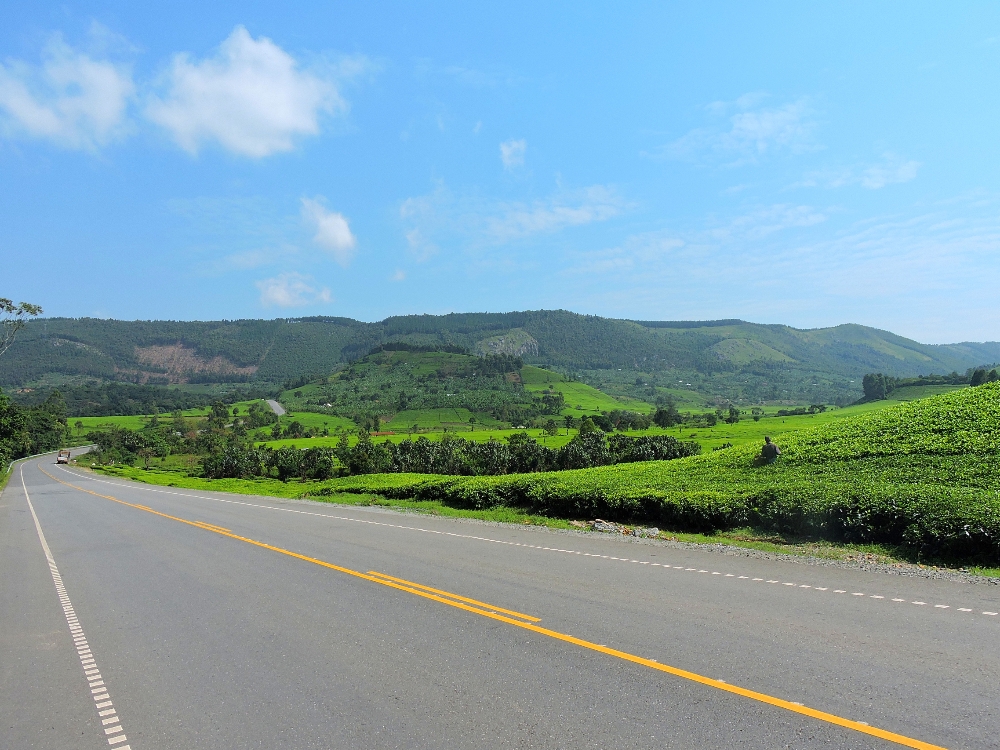
My route in Uganda would involve a loop through the western part of the country, returning back to Kampala, and then continuing to the east. The aim would be to visit five of the most important National Parks and a few other locations for seeing birds and other wildlife. Coming up with a reasonable schedule for doing that was not particularly simple, and while expenses were generally low in the country, around the Parks things were, unsurprisingly, noticeably more expensive, so that also had to be taken into account. Additionally, while the roads were often good, there were also some negative factors. About one hundred sixty kilometers of my route, a little over ten percent, were over dirt surfaces. Those were primarily access roads into the Parks, but also a few short-cuts here and there. Most of the time, those were above average, by dirt road standards, but some were excessively rocky and others were dustier than perhaps any others I have previously used. An even more annoying aspect was that, while most of the highways are smooth, Uganda largely spoils that fact by having probably the most obnoxious regime of speed bumps to be found anywhere (and I have seen just about all the others by now.) An exceedingly wide array of these were placed at both ends of every village along the highways, of which there were a great number, and occasionally seemingly in the middle of nowhere. I learned later that those were in protected areas, ostensibly to prevent motor vehicles from smashing into the local wildlife. What was most bothersome was that I was often the only road user who was forced to slow dramatically to cross those annoyances. However, since I didn’t have any hard deadlines impending, and because I was hoping to recover a little from the stresses of the previous weeks, I kept my pace below average, and that helped to mitigate the effects of those two drawbacks.
The first Park I would visit was Murchison Falls National Park, located about eighty kilometers north of Masindi. I probably could have ridden there, as the road through the park is paved, though a significant section before the gate was still dirt at the time. However, at that distance I would have needed to spend a couple of nights there, so I saved two days by arranging a day trip from Masindi with a birding guide. This worked out well, and let me enjoy the Park, especially the boat trip on the Nile River, in a more relaxed manner.
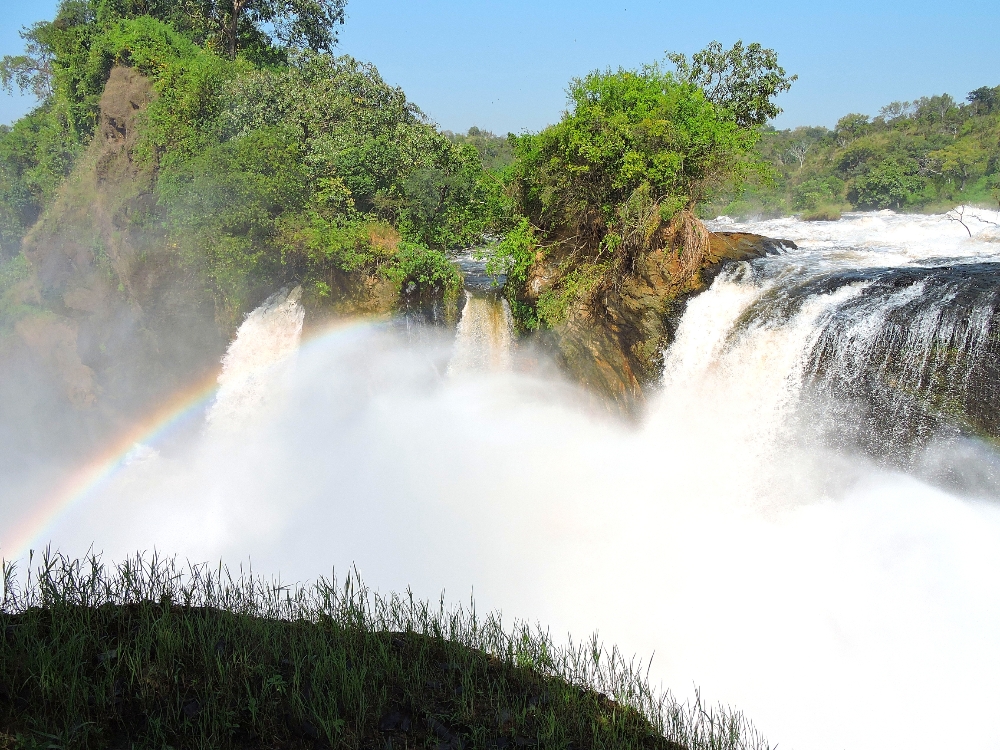
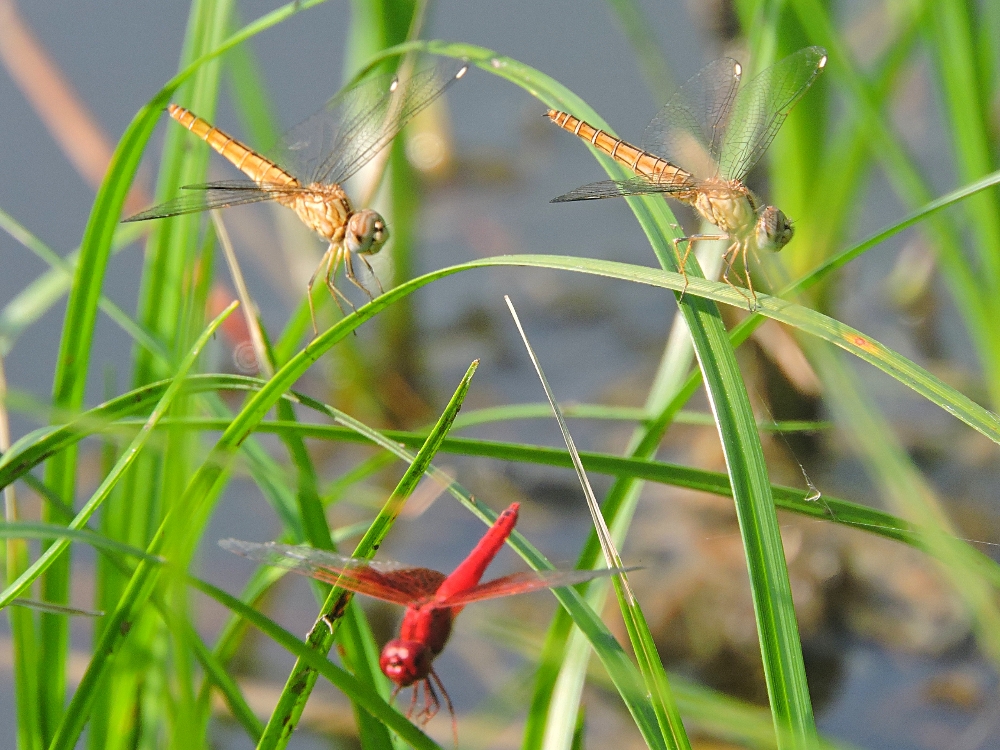
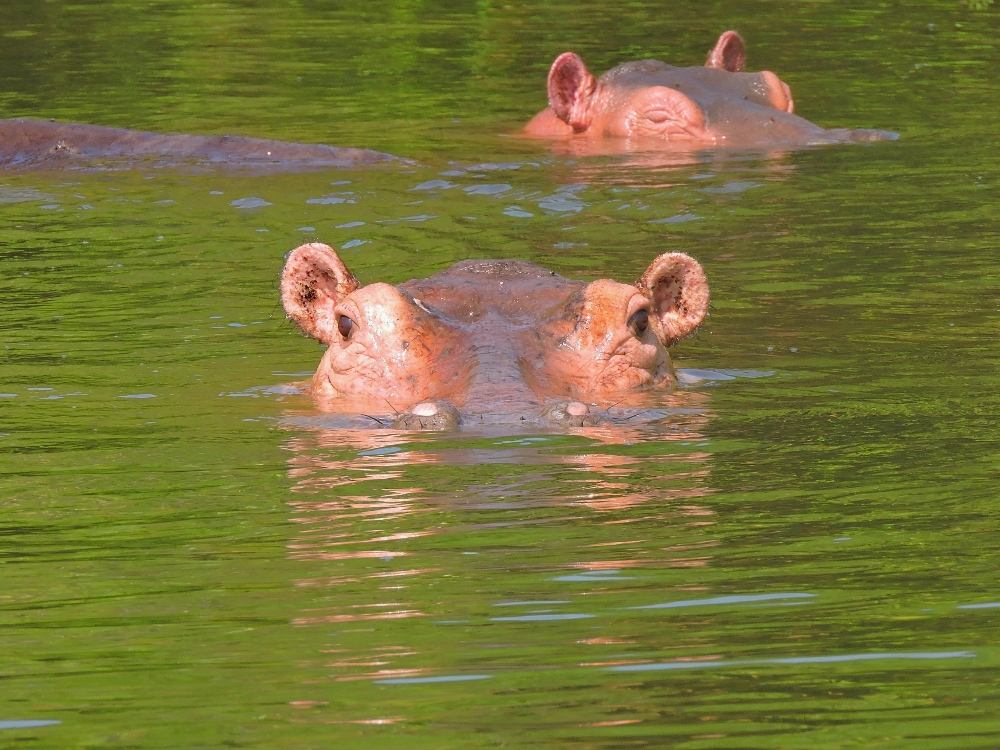
Next I continued south to Rwenzori Mountains National Park, which has its own post in another section, over a route that brought me into higher elevations for the first time. With the December holidays bracketing my stay there, and another park relatively close by, I took my time in this region with a few very short cycling days, including an early Holiday stop in the town of Kasese.
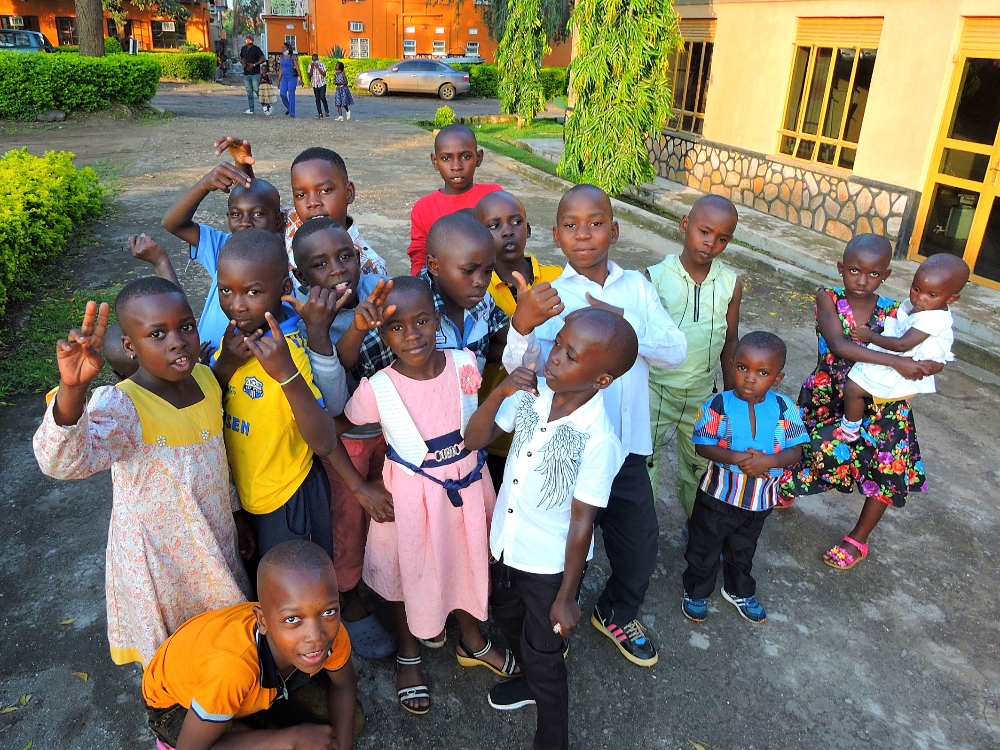
The next Park was Queen Elizabeth National Park and, once again, I could have cycled through the park on a paved highway, but because of potentially dangerous animals I wouldn’t have been allowed to go over any of the tracks or trails on my own. Consequently, I also arranged for a guide to pick me up in Kasese, north of the Park, take me and my gear on a game drive and then drop me off at a lodge on the southern side. Viewing mammals was never a big goal for the World2 Tour, since most of my intended route would not have been in areas where that would be expected, but, of course, when such an opportunity presents itself I will certainly take advantage of it, and, even though I had seen many of the same species on my previous Tour, I enjoyed many fine observations in Uganda. Those included one species that I had missed seeing before, specifically, a beautiful Leopard.
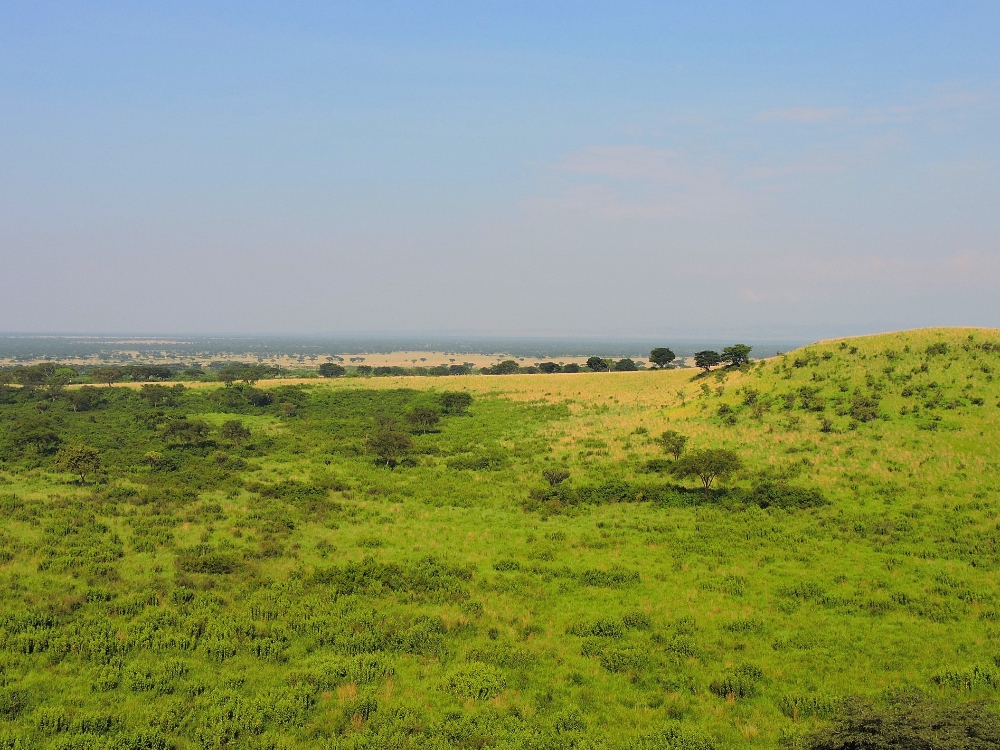
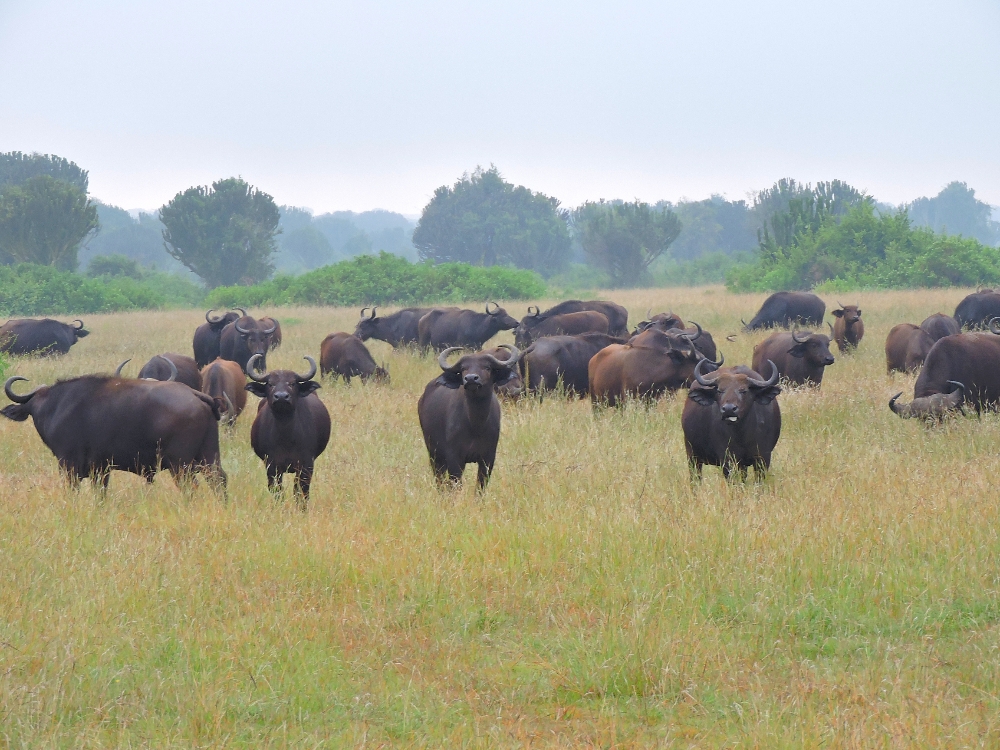
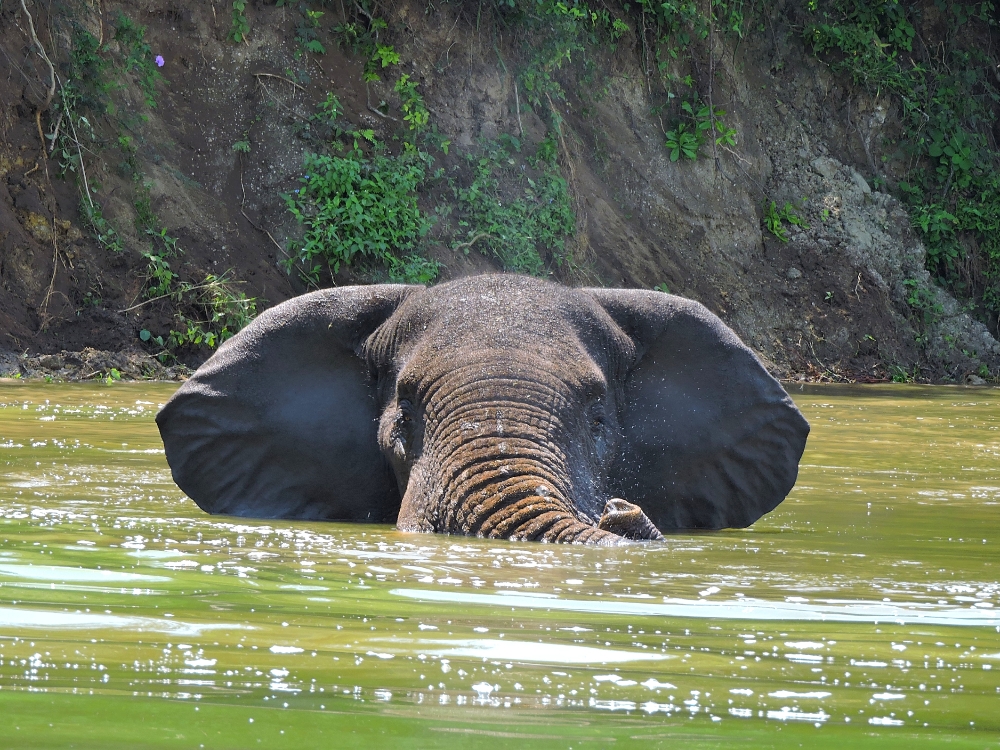
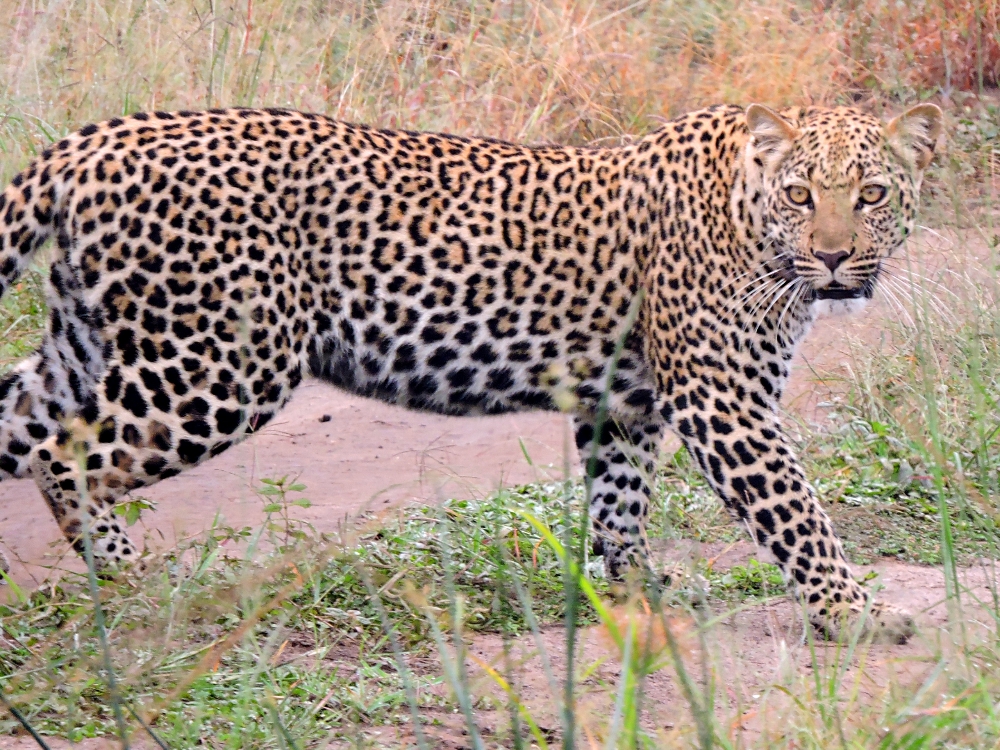
From there, I made my way to Bwindi Impenetrable National Park, which also has its own post, and, in so doing, brought myself up to the highest elevation I had been at since leaving Colorado during the third week of the Tour. In West Africa, I had been dreading even the smallest hills, even trying to route around them whenever possible, but here, with the cool mountain air, everything seemed back to normal again and the climbs were pleasant enough, if not particularly speedy. After Bwindi I turned back towards Kampala, and the main stop along the way was Lake Mburo National Park. There, because there are few predators in that Park, it is possible to go cycling along the tracks found within. A page on the Web led me to believe that I could do so on my own, but when I arrived I learned that was not correct. Initially, I was quite disappointed, but soon learned that there was a ranger there who could be my escort for a cycling safari, and in a few moments we were off. This was my second cycling safari in Africa, both were fantastic experiences, but also distinct in their own ways. In this case, the tracks in the Park were mostly in good condition, and, surprisingly, there was no problem with thorns. With visitation levels still low we were practically the only people in the Park that day, which was incredibly beneficial. Additionally, with few predators around, the animals in the Park seemed much less nervous, in contrast to my earlier experience. Especially enjoyable was the encounter with Giraffe, which has long been one of my favorite mammal species, and there they were completely unconcerned as we dismounted and walked up to where they were casually munching on Acacia leaves.
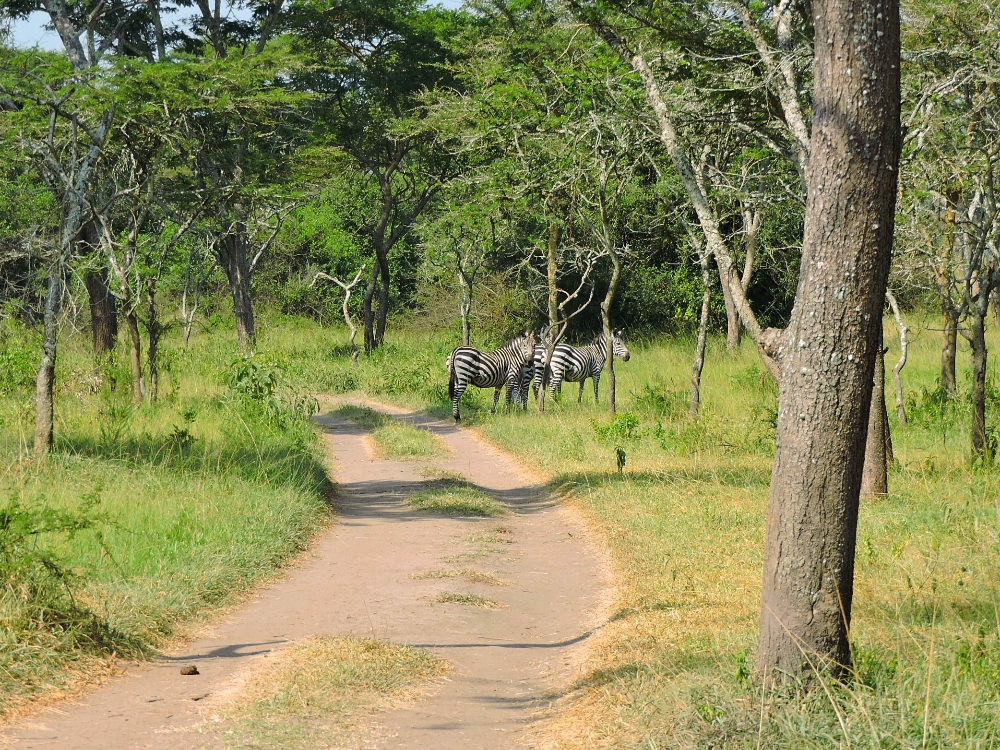
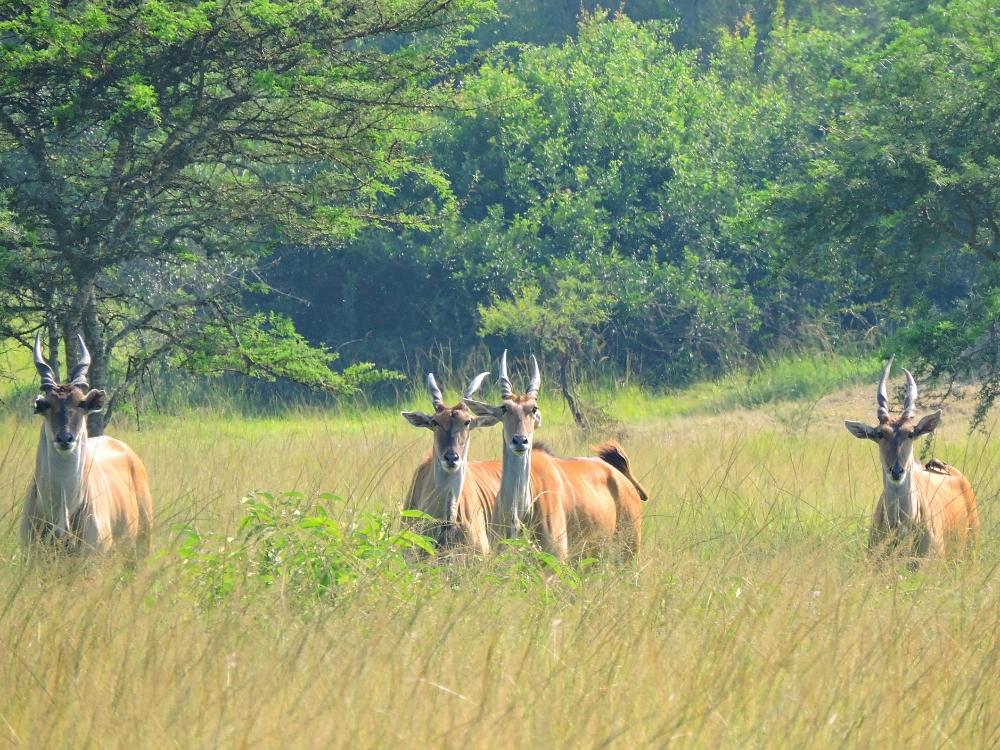
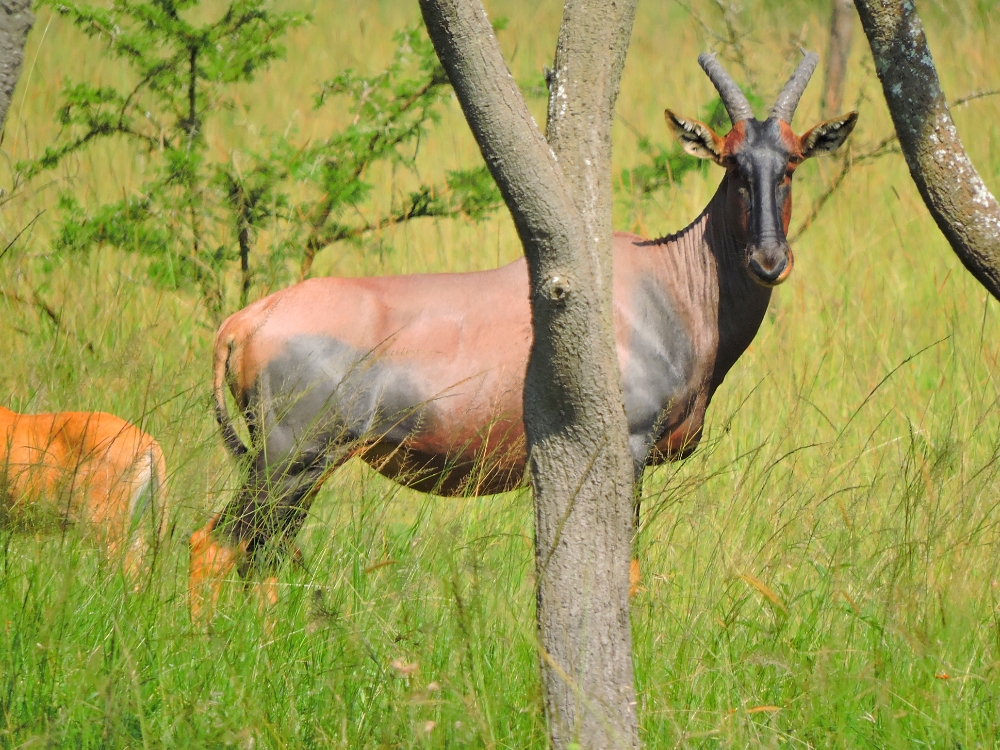
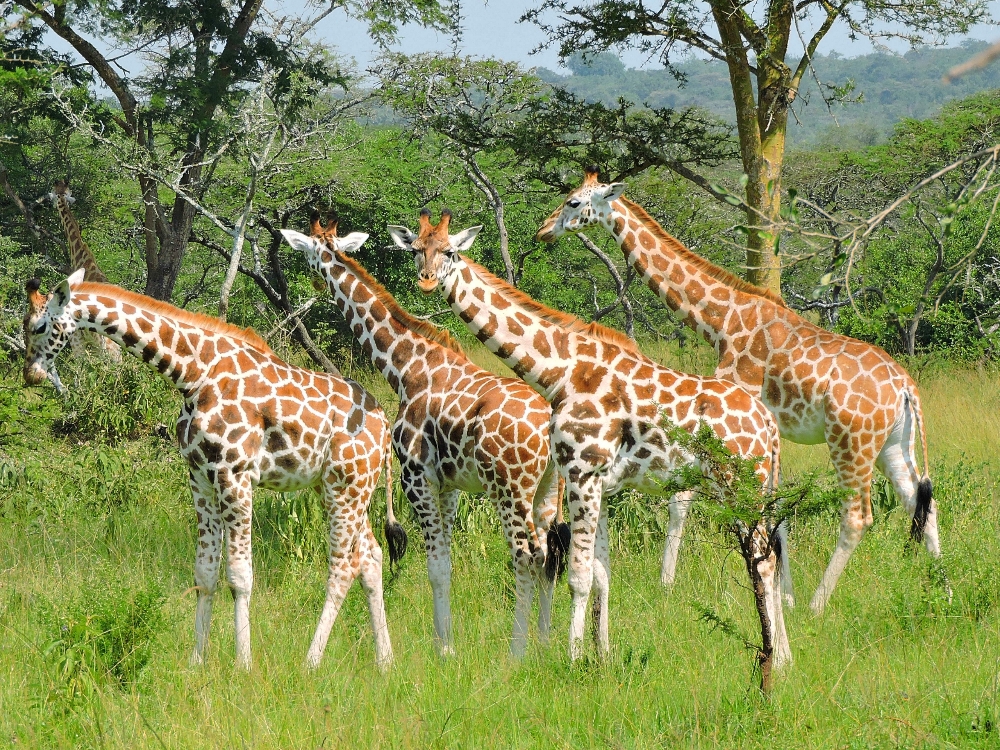
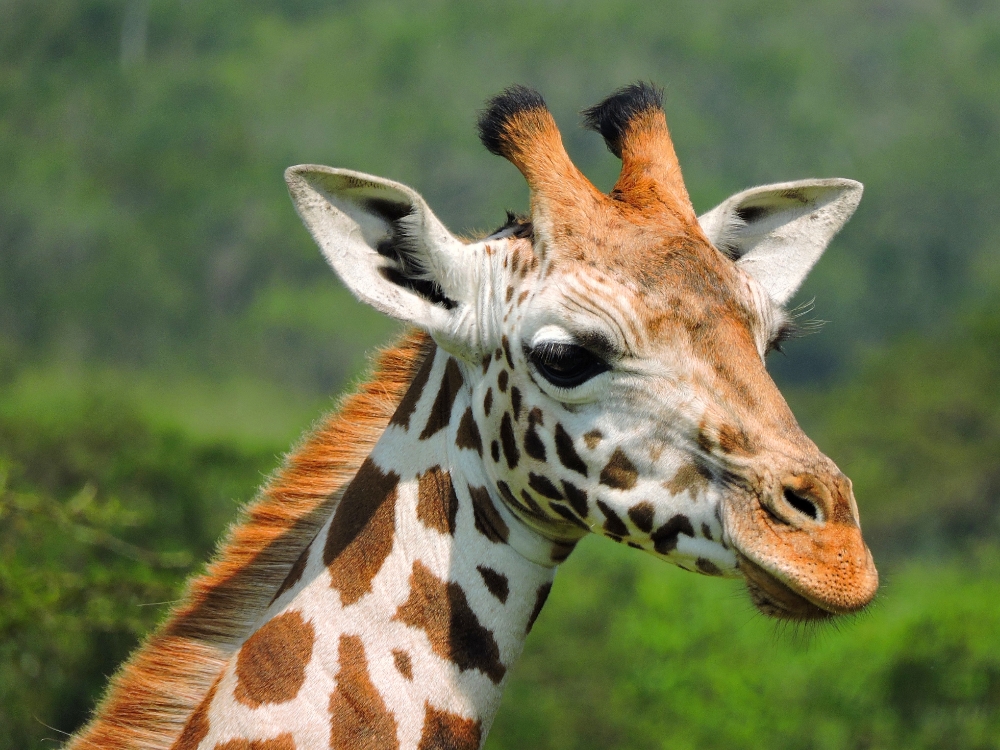
After that nice experience, I had just the return to Kampala, with only a quick stop at the Mabamba Swamp and another crossing of the Equator to punctuate an otherwise dreary section of the route. That particular segment involved the one example in the country of an older highway that was in a less than ideal condition, being narrower than the others, with what shoulders that existed being usually unusable, and a volume of traffic that was too high, and which always traveled too fast. Consequently, I split that section up into more days than I normally would have done.
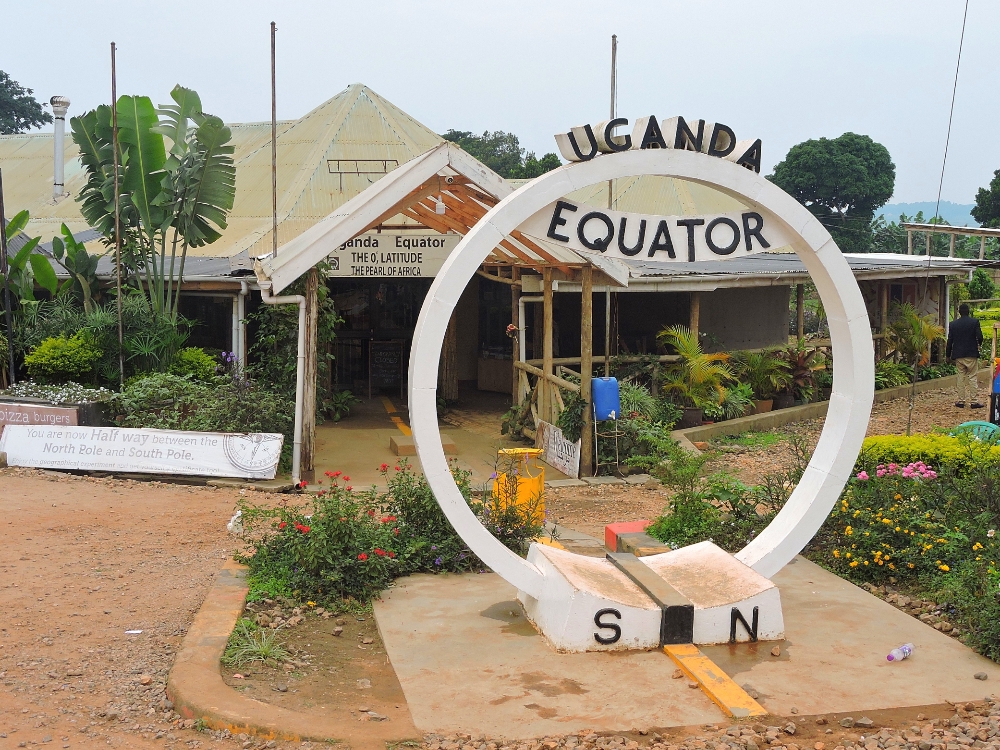
That may have been an error, because the day I arrived in Kampala was the day of the latest Ugandan Presidential election, another example of me accidentally bumping into an election while on Tour. In this case the potential reelection of the 35-year-incumbent was expected to be not without complications and so the entire city was closed down. Had I not been so relaxed with my cycling pace I might have been on to the next country by then, but instead I had to cool my heels in the city for four days and, most annoyingly, those scoundrels shut off the Internet for a full six days, which left me with little to do except sleep off the effects of something that I shouldn’t have eaten. It seems that either at home, or away, I can't escape becoming caught up in dysfunctional elections, or, at least, presidents who don't know when to leave. Overall, however, my time in Uganda was quite pleasant and successful, with many friendly people met, some enjoyable cycling, and a large number of beautiful birds and animals observed.
Unlike many cyclists, I keep a great distance between myself and any sort of synthetic fabrics when I am riding, preferring to dress myself, in part, with a classic cotton t-shirt instead. In recent years, I have taken to using a variety that has a longer tail than is standard, and have now become enamored with, and accustomed to, that particular design, as it has more than one advantage when cycling. However, at this point in the World2 Tour the four white shirts I left home with had definitely been showing the effects of time. The Tour logos I had printed on them had long since faded, and, after many days of full-on exposure to the Sun, their fabric was now close to complete disintegration. With a relatively short, but unknown, length of time remaining in the Tour, I had been motivated to keep those intact as long as possible, especially since I would be unlikely to locate suitable extra-long replacements while on the road. However, my attempts to stitch up their increasing number of holes were becoming more futile with each passing day. Then, on the way to Bwindi, in the town of Kabale, I noticed that, like many other places where local businesses of a similar trade are located in close proximity to one another, strung out along the road close to my hotel were numerous tailor shops and other clothing-related businesses. On the return trip back through the town, I decided to stop for a day and see if I could find someone to make me some new t-shirts. It did not take me long to locate a tailor who agreed to do the job, however the only white cotton fabric available in Kabale was not the stretchy kind usually used for such garments and I wasn't sure if the available material would work. Nevertheless, I decided to try having a few made anyway, and was pleasantly surprised by the results, which look a little more like old-school jerseys, but fit well and are quite comfortable. That really gave me a mental boost going forward. Fresh clothes!
To end my visit, there were just a few rather short, but tedious, days to reach the border with Kenya, one more covid test, an excessively expensive visa application, and then something I had not done in a long time, crossing into another country—by land. Fresh!